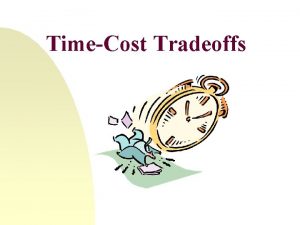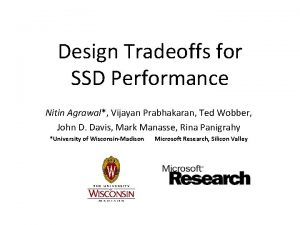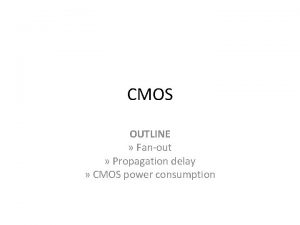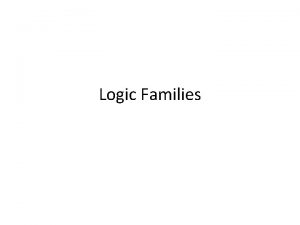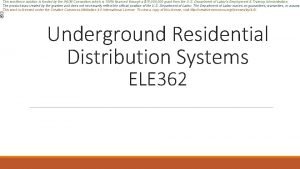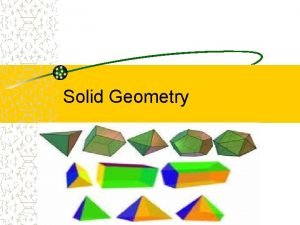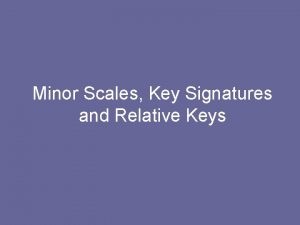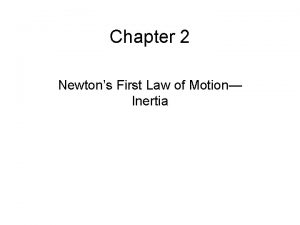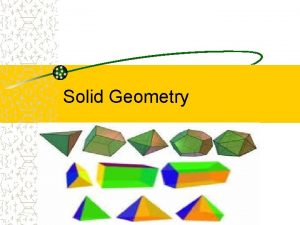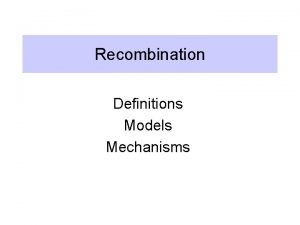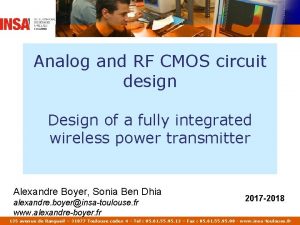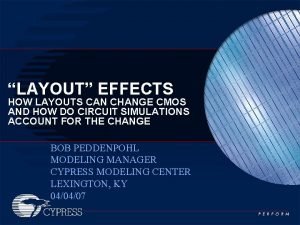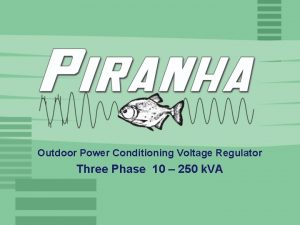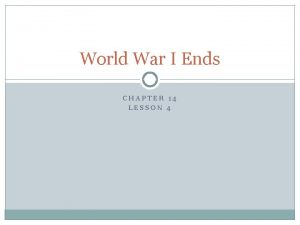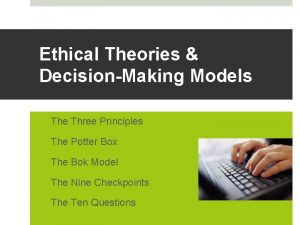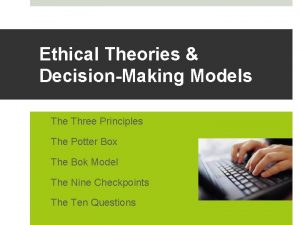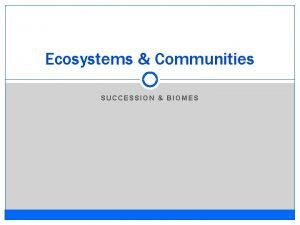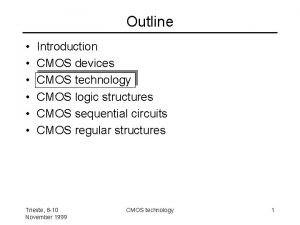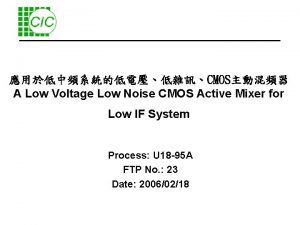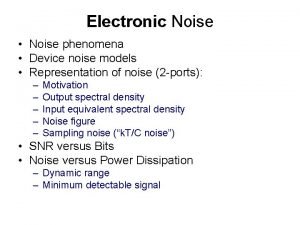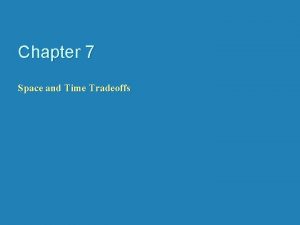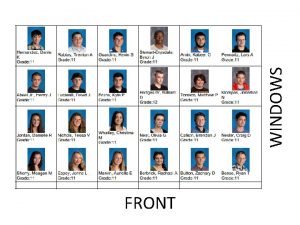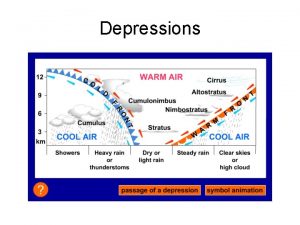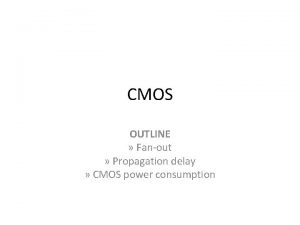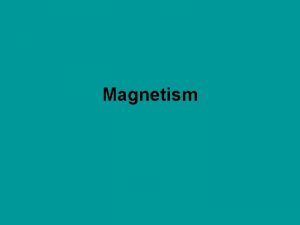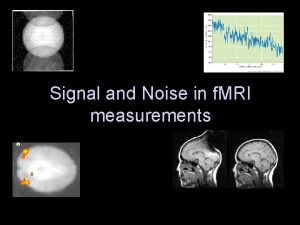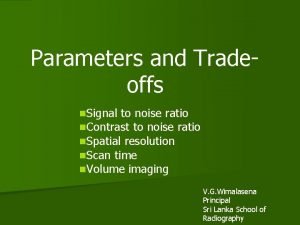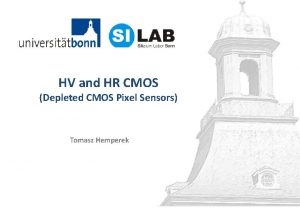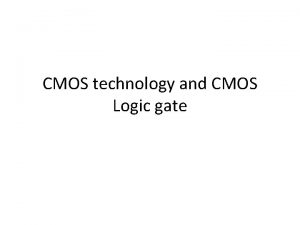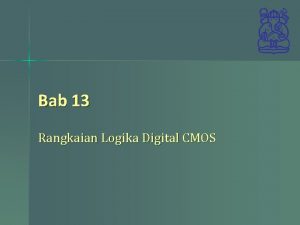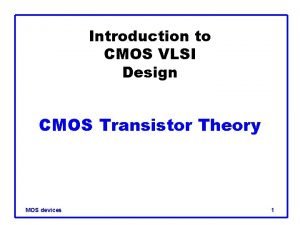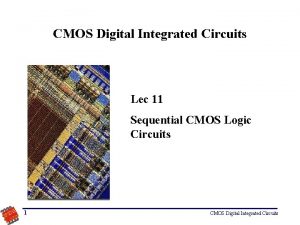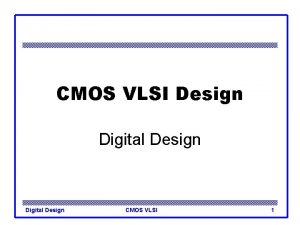Noise and Power Tradeoffs in CMOS Front Ends






























- Slides: 30

Noise and Power Tradeoffs in CMOS Front Ends Paul O’Connor VIth International Meeting on Front End Electronics Paul O'Connor BNL May 18, 2006

Acknowledgements • • Gianluigi De Geronimo Veljko Radeka Angelo Dragone Jean-François Pratte VIth International Meeting on Front End Electronics Paul O'Connor BNL May 18, 2006 2

Outline • Fundamental limits • Constrained noise optimization – power – speed • Figure of merit – analog – digital • Architecture choices • Summary VIth International Meeting on Front End Electronics Paul O'Connor BNL May 18, 2006 3

What are the fundamental limits? • Charge of one electron ENC ≥ 1 electron rms? VIth International Meeting on Front End Electronics Paul O'Connor BNL May 18, 2006 4

What are the fundamental limits? • Uncertainty principle? DE·Dt ≥ ħ/2 e. g. , Cd=1 p. F, tp=1 ms DQ ≥ 0. 06 e. VIth International Meeting on Front End Electronics Paul O'Connor BNL May 18, 2006 5

What are the fundamental limits? • Thermal fluctuations? e. g. , at 300 K: Cd 0. 1 p. F 1 10 VIth International Meeting on Front End Electronics ENC 126 e 400 1260 Paul O'Connor BNL May 18, 2006 6

What are the fundamental limits? • Channel thermal noise (w. T depends on power and level of inversion) e. g. , w. T = 1 GHz, tp = 1 ms, Cd=1 p. F ENCt > 25 e. VIth International Meeting on Front End Electronics Paul O'Connor BNL May 18, 2006 7

What are the fundamental limits? • Low frequency (1/f) noise e. g. , Kf = 10 -24 J, Cd=1 p. F ENCf > 16 e- VIth International Meeting on Front End Electronics Paul O'Connor BNL May 18, 2006 8

Most systems are power-constrained • • particle physics space security (portable) imaging VIth International Meeting on Front End Electronics services/cooling/material limited power sources power density/cooling Paul O'Connor BNL May 18, 2006 9

Shaping time is not always a free choice tp may be constrained by – – pileup timing precision ballistic deficit parallel noise (noise corner time constant √Rs. Rp. Cin 2) VIth International Meeting on Front End Electronics Paul O'Connor BNL May 18, 2006 10

How can power be reduced without sacrificing performance (SNR, pileup)? • design: – optimize M 1 and H(s) • technology: – scaling impact on noise and dynamic range • architecture: – multiplexing and digitizing strategy VIth International Meeting on Front End Electronics Paul O'Connor BNL May 18, 2006 11

Input transistor (M 1) optimization • Optimize for total (white + 1/f) series noise: – adjust W, L while holding Id and tp constant • Correct modeling of weak, moderate, and strong inversion (EKV model): – dependence of gm, Cg, g on operating point • Low-frequency noise: – dependence on Lg – spectral dependence • Predict result of scaling to new technologies P. O’Connor, Proc. FEE 2003 Snowmass G. De Geronimo, P. O’Connor, TNS 52(6), 3223 (2005) VIth International Meeting on Front End Electronics Paul O'Connor BNL May 18, 2006 12

White + 1/f noise vs. M 1 power Transistor width optimized for each configuration vs. detector capacitance vs. peaking time tp=1 ms VIth International Meeting on Front End Electronics Cd=1 p. F Paul O'Connor BNL May 18, 2006 13

Noise models compared Simple 1/f noise model Pch More accurate 1/f noise model Nch TSMC 0. 25 mm process Cd = 1 p. F tp = 1 ms VIth International Meeting on Front End Electronics Paul O'Connor BNL May 18, 2006 14

Choice of filter function Shaper Characteristics VIth International Meeting on Front End Electronics Paul O'Connor BNL May 18, 2006 15

High-order shaper improvements • add shaper poles • improve symmetry 0. 25 mm CMOS Cd=1 p. F tw=100 ns • longer tp for same tw, lower noise • small increase in shaper power • power does more good here than in M 1! • area penalty BALLISTIC DEFICIT VIth International Meeting on Front End Electronics Paul O'Connor BNL May 18, 2006 16

Figure of merit for charge amplifiers • Expresses the power cost of achieving SNR and speed • Can be applied to front ends in any technology • Corresponds to figure of merit for analog-digital converters: • Provides guidance for low-power system design VIth International Meeting on Front End Electronics Paul O'Connor BNL May 18, 2006 17

Figure of merit for charge amplifiers (FOMCSA) vs. detector capacitance 1. 5 p. J Medipix-2 Llopart et al. , TNS 49(2002)2279 PSI-46 Erdmannt et al. , NIMA 549(2005)153 VIth International Meeting on Front End Electronics Paul O'Connor BNL May 18, 2006 18

Figure of merit for ADCs (FOMADC) vs. dynamic range 2. 8 p. J VIth International Meeting on Front End Electronics Paul O'Connor BNL May 18, 2006 19

Architecture choices • Digital waveform recording of every channel requires ADC to have: – same SNR as charge amplifier – sampling frequency 2 X – 20 X higher than analog bandwidth • Guarantees PADC >> PCSA • Better architecture: capture and buffer the analog information on the FEE ASIC, then steer samples to the ADC • Switched capacitors or peak detectors can serve as the sampling cells • Use analog buffers (memory) with simultaneous READ/WRITE to avoid deadtime VIth International Meeting on Front End Electronics Paul O'Connor BNL May 18, 2006 20

Analog vs. digital feature extraction digital waveform record tp Epk TOT event-to-event time trigger thr. cross VIth International Meeting on Front End Electronics Paul O'Connor BNL May 18, 2006 21

Analog storage and buffering schemes unbuffered sample buffered mux sampling on switched caps mux sampling on peak-detect caps VIth International Meeting on Front End Electronics Paul O'Connor BNL May 18, 2006 22

EXAMPLES VIth International Meeting on Front End Electronics Paul O'Connor BNL May 18, 2006 23

Rule-of-thumb estimates • Use FOMCSA ~ 1 p. J, calculate most quantities of interest. • Given Pmax, rate r, what is achievable SNR? – e. g. P=1 m. W, r=100 k. Hz, SNR ~ 103 • What power needed to get timing accuracy st? – e. g. st=2 ns, P ~ 50 m. W VIth International Meeting on Front End Electronics Paul O'Connor BNL May 18, 2006 24

Readout of a TPC using analog buffering TPC Chamber Double-GEM (gain ~ 500) Mini-TPC with GEM readout for LEGS experiment at BNL Front-End Electronics ~7300 channels ASIC Pads ~7300 Anode Plane Gianluigi De Geronimo Jack Fried Anand Kandasamy Veljko Radeka Bo Yu VIth International Meeting on Front End Electronics Paul O'Connor BNL May 18, 2006 25

TPC Digitization Power • • • Npads 8000 Ntimeslices Nvoxels • Digitization Energy (12 bit resolution): 500 4 x 106 – 10 -12 J/bit * 212 * Nvoxels = 16 m. J • Power (FADC): – 16 m. J / 7 ms = 2000 W • (250 m. W/chan) Power (buffer and readout at 2 k. Hz trigger rate): – 16 m. J / 500 ms = 30 W ( 4 m. W/chan) • Compare with 0. 75 m. W/chan for amplifier + 0. 6 m. W/chan for PD + TAC. • With sparsified readout of only occupied channels buffered in PD: PADC ~ 0. 6 W (75 m. W/chan). VIth International Meeting on Front End Electronics Paul O'Connor BNL May 18, 2006 26

Biparametric spectrum (signature) 241 Am on CZT ris eti me ene rgy Channel no. VIth International Meeting on Front End Electronics Paul O'Connor BNL May 18, 2006 27

TOT measurement for pileup rejection Monochromatic 8 ke. V X-rays on Si pad detector Before correction After correction All data Exclude piled-up region VIth International Meeting on Front End Electronics Paul O'Connor BNL May 18, 2006 28

Summary • Noise is limited by available power and by the 1/f properties of the technology. • In addition to optimizing the first transistor, choice of shaping function is also important in noise optimization. • High-order shapers improve the power/noise tradeoff, and also improve pileup and charge collection performance. • An empirical figure of merit for charge amplifiers, analogous to that for ADCs, can be used to guide design choices. • Reducing the number of analog-to-digital conversions (where possible) improves noise by allowing power to be allocated to the front end. VIth International Meeting on Front End Electronics Paul O'Connor BNL May 18, 2006 29

VIth International Meeting on Front End Electronics Paul O'Connor BNL May 18, 2006 30
 Companding in pcm
Companding in pcm Examples of tradeoffs
Examples of tradeoffs Scarcity forces tradeoffs symbol
Scarcity forces tradeoffs symbol Design tradeoffs for ssd performance
Design tradeoffs for ssd performance Fanin and fanout in cmos
Fanin and fanout in cmos Power triangle
Power triangle Draw the symbol for a cold front
Draw the symbol for a cold front Noise power formula
Noise power formula Power line noise
Power line noise Comparison of logic families table
Comparison of logic families table Dead front vs live front transformer
Dead front vs live front transformer Cover page for school magazine
Cover page for school magazine What is the odds and ends kingdom
What is the odds and ends kingdom A solid object with two identical ends and flat sides
A solid object with two identical ends and flat sides Beadgcf flats
Beadgcf flats Jerusalem judea samaria and the ends of the earth
Jerusalem judea samaria and the ends of the earth Who governs and to what ends
Who governs and to what ends Violent delights shakespeare
Violent delights shakespeare When burl and paul stand on the scaffold
When burl and paul stand on the scaffold A solid object with two identical ends and flat sides
A solid object with two identical ends and flat sides Maternal and paternal chromosomes
Maternal and paternal chromosomes Device modeling for analog and rf cmos circuit design
Device modeling for analog and rf cmos circuit design Lod effect sa sb
Lod effect sa sb Outdoor voltage regulator
Outdoor voltage regulator Lesson 5 world war ii ends
Lesson 5 world war ii ends Chapter 27 lesson 4 world war 1 ends
Chapter 27 lesson 4 world war 1 ends Oxymorons in romeo and juliet
Oxymorons in romeo and juliet What is the classification of kubing
What is the classification of kubing Ends-based thinking
Ends-based thinking Ends based thinking
Ends based thinking Shrubland
Shrubland

